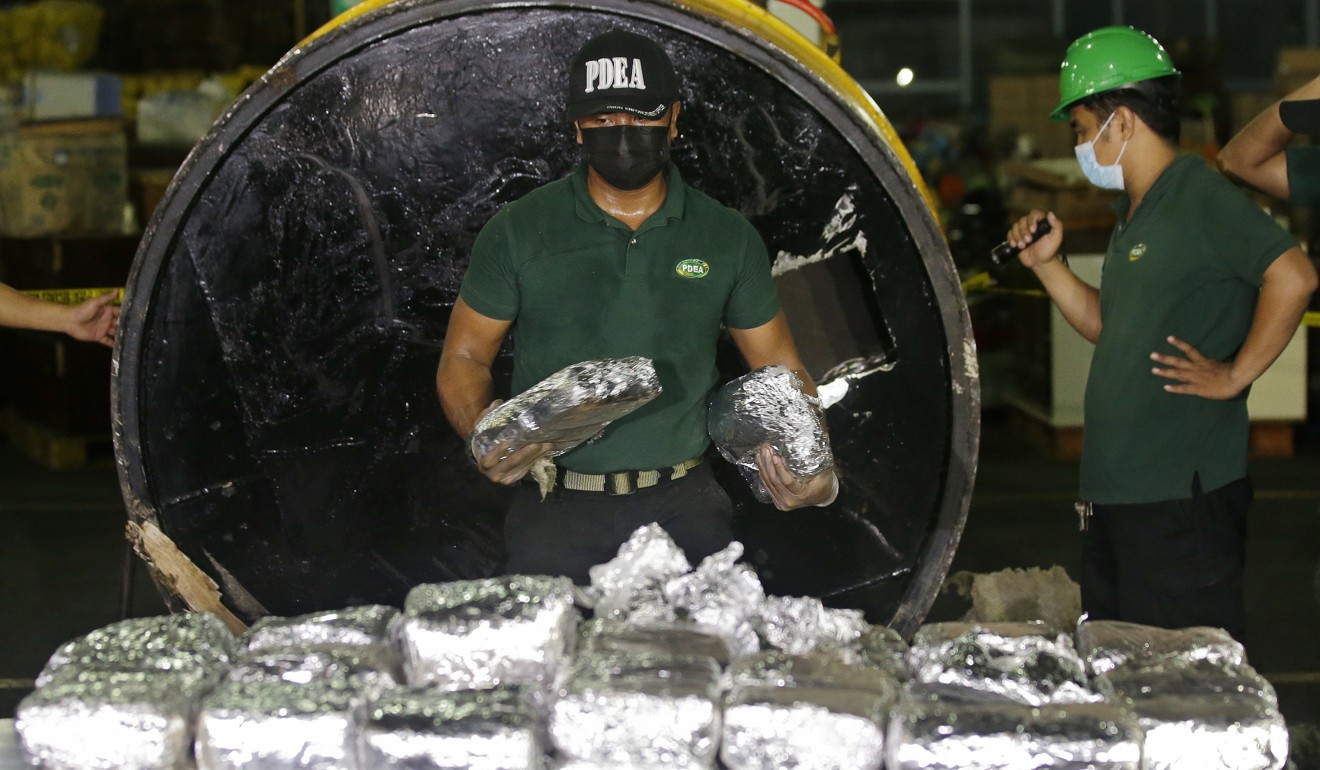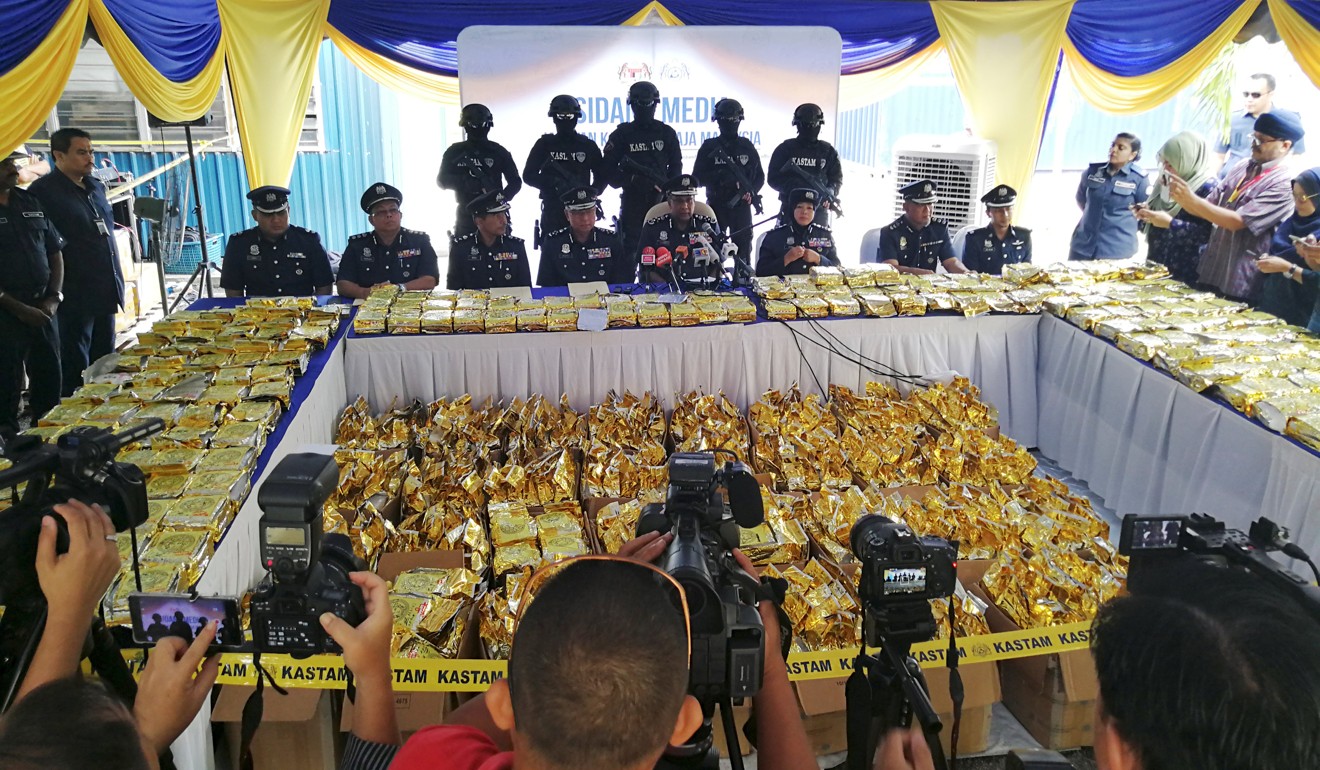
Some 100 new types of legal highs emerged in East and Southeast Asia in 2018: UN report
- The report also said the supply of methamphetamine and other designer drugs in the region has reached “unprecedented levels”
- A total of 434 new psychoactive substances were detected in East and Southeast Asia over the past decade, including potent synthetic opioids, such as fentanyl

About 100 new psychoactive substances – known as “legal highs” – emerged in East and Southeast Asia last year, as the production of methamphetamine and other synthetic drugs surged to “unprecedented levels”, a new report from the United Nations Office on Drugs and Crime has found.
According to the latest statistics released on Monday, more than 116 tonnes of methamphetamine were seized in the region in 2018, compared with 87 tonnes in 2017.
But the total amount seized last year – which already represents a three-fold increase from 2013 – may be even higher, as some countries have not confirmed their final numbers.
“Volumes of methamphetamine and other synthetic drugs originating from the Golden Triangle to Thailand have reached unprecedented levels,” said Niyom Termsrisuk, secretary general of the Office of Narcotics Control Board of Thailand.
“Large amounts of synthetic drugs have been trafficked to neighbouring countries in the region, but also further. The challenge is growing,” he said.

A glut in supply has made methamphetamine and synthetic drugs widely available despite a record number of seizures of the drug.
“Seizures of methamphetamine in 2018 were once again a record, yet street prices of the drug decreased in many parts of the region, indicating very high and increasing levels of availability,” said Tun Nay Soe, inter-regional programme coordinator with the UN anti-drugs agency.
“Data on seizures, prices, use and treatment all point to continuing expansion of the methamphetamine market in East and Southeast Asia,” he said.
According to the report, the increase in methamphetamine seizures has been particularly significant in countries of the Mekong.
In Thailand alone, 515 million methamphetamine tablets were seized in 2018, which corresponds to 17 times the total amount of the drug intercepted a decade ago.

While the market for methamphetamine is growing fast, a wide range of new psychoactive substances have also emerged in the region, said the report.
These are chemicals developed to replace drugs that are traditionally banned, and they manage to escape detection from the authorities for a period of time before they are eventually outlawed.
A total of 434 new psychoactive substances have been detected in the region over the past decade – including potent synthetic opioids, such as fentanyl and its analogues, that have killed thousands in countries including the US.
This number accounts for almost half the substances reported at the global level in the same period.
Preliminary data shows that at least 95 such new substances emerged in East and Southeast Asia last year alone.
“Aside from methamphetamine, which is getting most of the attention because of the surge in seizures and street price drops, synthetic opioids and other drugs have also been found across the region,” said Jeremy Douglas, Bangkok-based regional representative of the UN Office on Drugs and Crime.

Unlike other narcotics that may require land and more complex production structures, synthetic drugs can be made almost anywhere as long as a chemist has access to the necessary precursor chemicals.
Douglas said it was necessary for national leaders and authorities to rethink solutions. “This is not business as usual, and it is past time to change the response.”